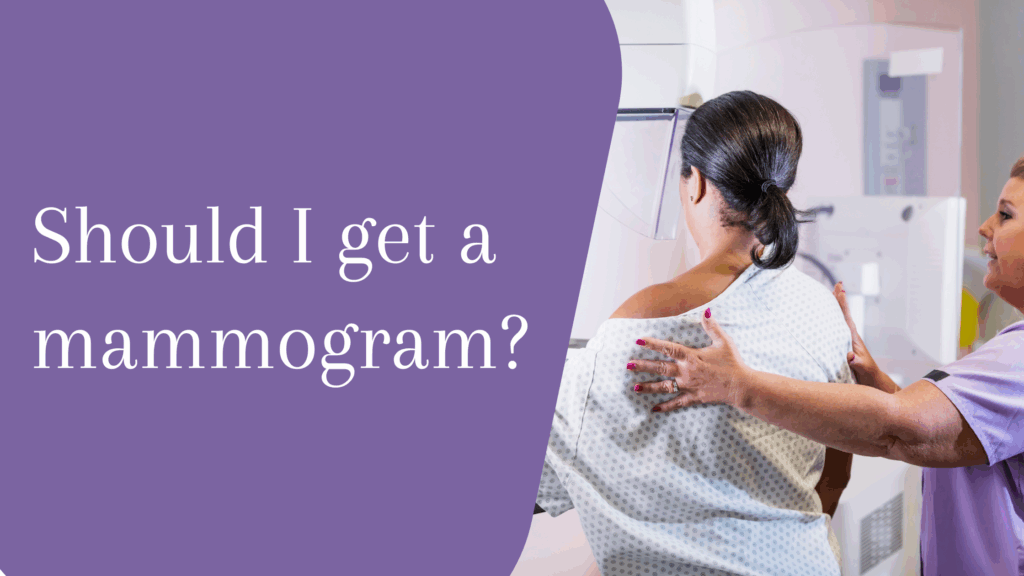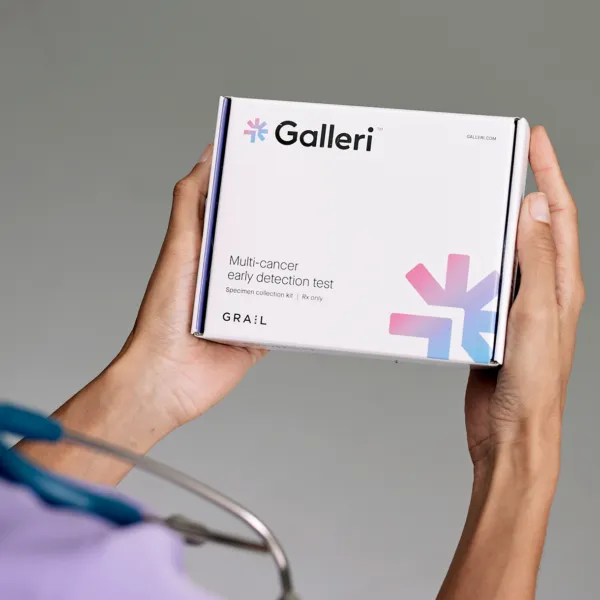
Quick Read:
- A mammogram may not be your best test option.
- Some concerns to consider: false positives, overdiagnosis and overtreatment, radiation and compression risks, issues with dense breasts, and late detection.
- There are many safe and non-invasive alternative tests that include: Galleri® Test, SonoCiné, Onconomics Plus RGCC, Thermography, Signatera™ For Breast Cancer, and PerfeQTion Imaging.
Please note: We are here to help YOU make educated and empowered decisions about your healing journey. This is why we are dedicated to researching and sharing (via the blog, podcast, online courses, etc.) the top studies, practices, therapies, and technology about healing breast cancer and living a vibrantly healthy life. Everything we do is based on science and fueled by meticulous research. Lastly, some of you may feel that a mammogram is the right choice for you, and we are here to support that. If you do choose to incorporate mammography in your healing journey, consider backing it up with other kinds of testing.
You have the right to question this statement from your doctor: “You are due for your mammogram.”
Wait, what? We know that is a bold statement because “Mammograms Save Lives,” says all the hot pink marketing you have seen your whole life. So before you stop reading, hear us out and let yourself rethink the “scary, painful squeeze test.” Perhaps they shouldn’t be the only option after all. Mounting evidence also agrees, and there are plenty of other safe and effective tests that can provide supportive data. So let’s explore!

Some Mammogram Concerns to Consider
“Mammograms save lives” is one of the most successful public health campaigns of all time, and once you hear something over and over again, you start to believe it without question. Even your doctor did, and maybe still does. The campaign has led to mammography becoming the infamous, big pharma-fueled 2.3 billion dollar industry. In other words, while it may not be the safest or most effective test, it is one that generates revenue for your insurance company. That being said, it still can be a helpful test for women who think it is their best screening option.
However, since we are focused on research, studies, and providing insight, here are a few of the big concerns:
False Positives Are Common
Over time, the chances of getting a false alarm from a mammogram are shockingly high. After 10 years of annual mammograms, more than 50% of women will receive at least one false positive (a suspicious result that turns out to be nothing).
But in the moment, that “nothing” can lead to weeks of fear and stress, unnecessary and potentially harmful biopsies, painful procedures, and massive medical bills. Your nervous system, your wallet, and your peace of mind take a hit—all for something that never needed treatment.
And this is something that should NOT be brushed off. Emotional trauma and stress are triggers that can initiate the development of cancer in your body. Over and over again, we hear from women in the BCC community that they can pretty much pinpoint the trauma and stress that led to the development of their diagnosis.
Overdiagnosis and Overtreatment
One of the biggest concerns with mammograms is the rise in diagnoses of DCIS (Ductal Carcinoma In Situ)—a condition that was almost never diagnosed before mammograms became routine. Now, DCIS accounts for 1 in 4 breast cancer diagnoses.
But here’s the truth that rarely gets shared: DCIS is a very early-stage cancer. It’s a cluster of abnormal cells that might never grow, spread, or cause harm. In fact, research shows that your chances of developing invasive breast cancer from DCIS are less than 1%.
Yet, thousands of women each year go through surgery, radiation, and hormone treatments for DCIS. These harsh treatments can damage healthy tissue, disrupt your immune system, and even trigger the development of invasive breast cancer down the line.
To learn more about how DCIS treatments can lead to cancer, please review this blog post.
Radiation Risks and Compression
Let’s not forget: mammograms use radiation. Even though the dose is considered low, repeated exposure over time adds up…especially for women who are already at high risk. (Study).
What’s more, the physical compression of the breast during a mammogram may stimulate cancer cells to grow or spread. Another reason to consider whether mammography is right for you.
Late Detection
Here’s the scary truth that doesn’t make the infamous marketing campaigns: Mammograms detect tumors 5–8 years after the tumor has already started developing. That’s why Essential #7: VERY Early Detection is so crucial. However, there are plenty of tests that detect imbalances and potential cancer growth before a tumor forms—not after it’s already growing.
Difficult to See Through Dense Breasts
Almost half of all women ages 40–74 fall into the dense breast category, and a third of all breast cancers occur in women with dense breasts. (Study) However, many of those go undiagnosed by mammography because it is difficult for the machine to pick up tumors in dense breasts. Yet, you do have control over your breast density and the types of testing you use. Please read this blog post to uncover surefire ways to decrease dense breasts.
To dive even deeper into why mammograms may not be your best option, please watch b00bs: The War on Women’s Breast by investigative journalist Megan Smith, M.S. Dr. V has interviewed Megan twice on the podcast, and you can listen to these fascinating episodes here and here.
Europe Is Saying NO To Mammograms
Large-scale studies have raised red flags across Europe, and their medical systems are taking action. Here are a few examples:
- In 2013, the Swiss Medical Board recommended phasing out routine mammography screening, citing that the harms outweigh the benefits. (More details here)
- The Canadian National Breast Screening Study, which followed nearly 90,000 women for 25 years, found no significant reduction in breast cancer deaths from mammograms—but did find a 22% overdiagnosis rate. (Study)
- Multiple countries across Europe have scaled back or stopped their mammogram screening programs altogether. While others have a shorter window of when a woman should get a mammogram. For example, the American Cancer Society recommends that women ages 40-74 get mammograms every 2 years. In many countries in Europe (that still recommend mammograms), the age range is 50-69.
Safe, Non-Invasive Testing Options
For testing, your goal is early detection without harm. Thanks to advances in science, we have powerful tools that enable us to do just that. Below are seven innovative, safe, non-invasive, and accurate breast cancer testing options to consider.
However, regardless of which test you use, ALWAYS back it up with a second test. No stand-alone screening tool (including a mammogram) is 100% accurate.
- Galleri® Test. This test scans for 50 types of cancer, many of which are not commonly screened for today, in one simple blood draw. Learn more about the Galleri® Test here.
- SonoCiné. The SonoCiné AWBUS scan provides greater visual detail of breast tissues, including the axilla (underarm/lymph nodes). This is extra helpful for 45% of women with dense breast tissue (read this blog if you have dense breasts) or implants, as mammograms often have trouble providing clear and detailed images. Learn more about The SonoCiné AWBUS here.
- Onconomics Plus RGCC. This test provides crucial information on the presence of circulating tumor cells (part of cancer stem cells) and their concentration in people with a confirmed diagnosis of specific forms of cancer, including breast, colon, and prostate cancer. It will also tell you which natural (and pharmaceutical) substances would help your body the most. Learn more about RGCC tests here.
- Thermography. Digital infrared thermographic imaging (DITI) can spot physiological breast cancer signs 6 to 8 years before any palpable mass appears. Learn more about thermography via this blog post and this podcast episode.
- Signatera™ For Breast Cancer. This blood test can inform if the cancer is shrinking, growing, or coming back, and can detect cancer 6 months before a CT scan. Please learn more about Signatera™ For Breast Cancer here.
- PerfeQTion Imaging. This machine uses breakthrough soundwave technology to create fast, comfortable, radiation-free 3D breast scans. This new method of breast cancer screening is poised to replace screening mammograms, ultrasounds, and MRIs with a single, comfortable, and accurate test. Please learn more about PerfeQTion Imaging here.
Take Advantage of Your Safe OPTIONS And Endless Support!
 You don’t have to accept and follow the first suggestion from the first doctor. You have endless options and an abundance of community support within your Breast Cancer Conqueror community!
You don’t have to accept and follow the first suggestion from the first doctor. You have endless options and an abundance of community support within your Breast Cancer Conqueror community!
Whether it’s choosing mammograms or a different option, such as the Galleri Test or thermography, we truly believe every woman deserves to feel confident in the screening choices she makes for her breast health plan. While we encourage you to explore all options and potential risks, there is no shame in following the path that feels right for you and your peace of mind.
To gain more insight into effective and proven integrative healing options, please take our on-demand course, “Conquering Breast Cancer Together: A Balanced Approach to Your Healing Journey.” Breathe deep, absorb, and then act with assurance. You got this; we’ve got you!
